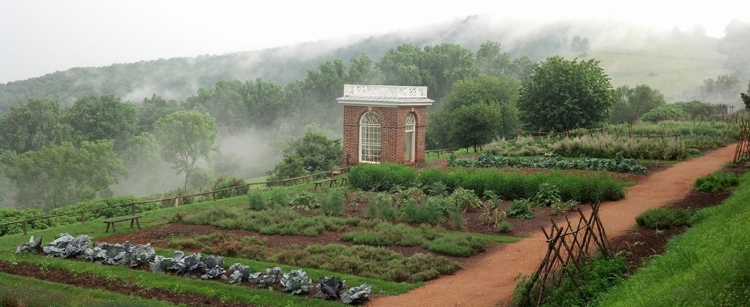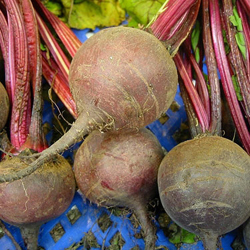Monticello’s rich history in seeds
Posted on: January 6, 2018 | Written By: Friends of EG |
Thomas Jefferson was an amazing gardener at his Monticello home. He grew more than 250 different varieties of 70 different vegetables there. The southern exposure gave his garden plenty of sunshine and warmth. Even though Jefferson was an accomplished gardener, he learned some of the same painful lessons that all gardeners discover. His 700-page Garden Book is filled with letters and observations from a lifetime in the garden. It includes many of the varieties he grew and can still be grown today.

The garden at Monticello is filled with historic plants.

‘Early Blood Turnip-rooted Beet’
Thomas Jefferson regularly planted Red, Scarlet, and White beets in the Monticello vegetable garden. ‘Early Blood Turnip-rooted Beet’ was introduced c. 1820; in Field and Garden Vegetables of America (1863), This variety bears edible, dark leaves with bright red stems, and stores well for winter use.
Numerous types of cabbages were planted in Thomas Jefferson’s gardens throughout his lifetime, including French, Milan, Savoy, Ox-heart, Roman, Scotch, Sugarloaf, York, and Winter. ‘Early Jersey Wakefield’ forms a compact, somewhat conical head up to 15” long and 7” wide with glaucous-green leaves. First grown in New Jersey in 1840, it is a fine early-heading variety with a sweet flavor and was popular in 19th-century markets.
Grow a piece of history with seeds from Monticello.